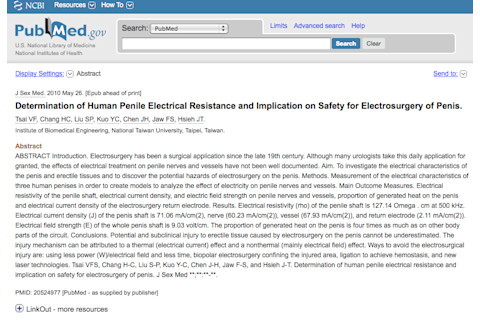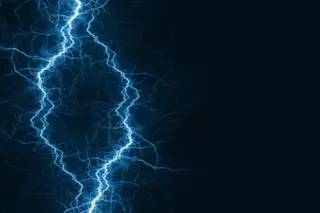Determination of Human Penile Electrical Resistance and Implication on Safety for Electrosurgery of Penis.
"Electrosurgery has been a surgical application since the late 19th century. Although many urologists take this daily application for granted, the effects of electrical treatment on penile nerves and vessels have not been well documented. Aim. To investigate the electrical characteristics of the penis and erectile tissues and to discover the potential hazards of electrosurgery on the penis. Methods. Measurement of the electrical characteristics of three human penises in order to create models to analyze the effect of electricity on penile nerves and vessels. Main Outcome Measures. Electrical resistivity of the penile shaft, electrical current density, and electric field strength on penile nerves and vessels, proportion of generated heat on the penis and electrical current density of the electrosurgery return electrode. Results. Electrical resistivity (rho) of the penile shaft is 127.14 Omega . cm at 500 kHz. Electrical current density (J) of the penis shaft is 71.06 mA/cm(2), nerve (60.23 mA/cm(2)), vessel (67.93 mA/cm(2)), and return electrode (2.11 mA/cm(2)). Electrical field strength (E) of the whole penis shaft is 9.03 volt/cm. The proportion of generated heat on the penis is four times as much as on other body parts of the circuit. Conclusions. Potential and subclinical injury to erectile tissue caused by electrosurgery on the penis cannot be underestimated. The injury mechanism can be attributed to a thermal (electrical current) effect and a nonthermal (mainly electrical field) effect. Ways to avoid the electrosurgical injury are: using less power (W)/electrical field and less time, biopolar electrosurgery confining the injured area, ligation to achieve hemostasis, and new laser technologies."















